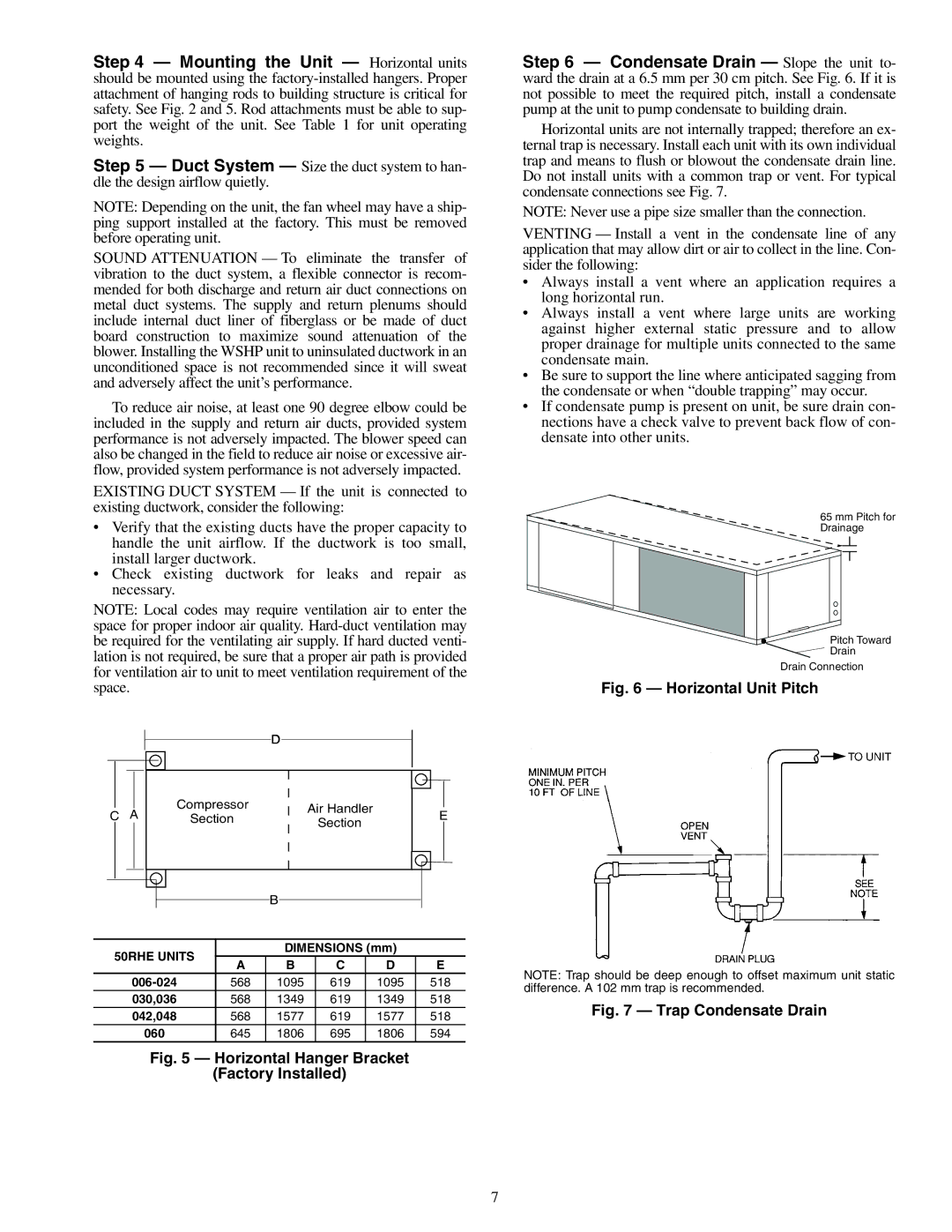50RHE006-060 specifications
The Carrier 50RHE006-060 is a robust commercial rooftop unit designed for efficient heating and cooling in various applications. This model is part of Carrier’s renowned line of HVAC systems, known for their reliability and performance. With a nominal cooling capacity of 5 tons and heating capacity of 6 tons, this unit is suitable for medium-sized commercial spaces such as retail stores, offices, and schools.One of the standout features of the Carrier 50RHE006-060 is its advanced scroll compressor technology. This type of compressor is recognized for its efficiency and durability, offering quiet operation while minimizing energy consumption. The inclusion of a variable-speed blower motor enhances comfort by providing consistent airflow while also reducing energy costs by adjusting the speed according to the demand.
Another key characteristic is its integrated microprocessor control system, which allows for precise temperature management. This feature not only provides optimal comfort but also ensures energy savings. The system’s controls can be easily integrated with existing building management systems, allowing for seamless operation and monitoring.
The Carrier 50RHE006-060 boasts enhanced insulation properties, which help reduce noise during operation and improve energy efficiency. Its robust design can withstand various weather conditions, making it a reliable choice for rooftop installation. Moreover, it is designed with accessibility in mind, featuring service doors that allow for easy maintenance, reducing downtime and operational costs.
In terms of efficiency, the unit is designed to meet or exceed EPA energy efficiency standards. It utilizes environmentally friendly refrigerants, adhering to regulations aimed at reducing greenhouse gas emissions. Additionally, the design includes a high-efficiency heat exchanger, which maximizes heat transfer and improves overall performance.
The Carrier 50RHE006-060 is also equipped with a dual-stage heat function, allowing it to provide optimal heating for varying weather conditions, ensuring comfort during the colder months. Furthermore, the unit’s design incorporates features such as hot gas bypass for improved dehumidification, making it adaptable to different climates and enhancing indoor air quality.
In summary, the Carrier 50RHE006-060 stands out with its efficient compressor technology, smart control systems, robust construction, and environmentally conscious design. These features make it a top choice for commercial spaces seeking an effective, reliable, and energy-efficient heating and cooling solution.

